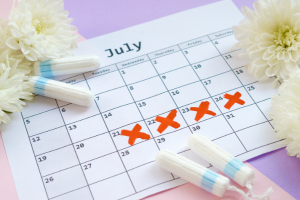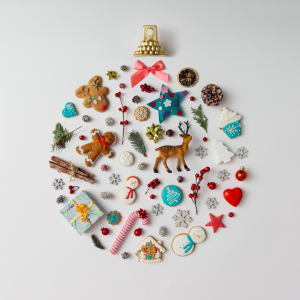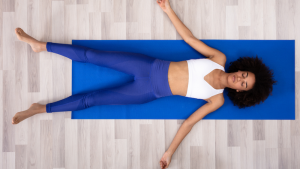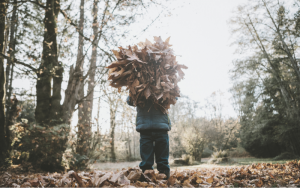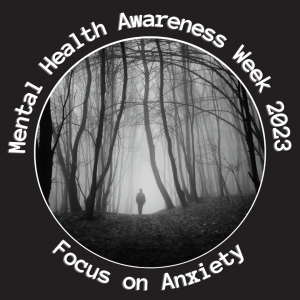Welcome to 2019! I wanted the first entry of this new year to be about something significant, meaningful and potentially life-changing. This entry is about the benefits and power of touch.
Touch is our first sense to develop, and also the first language we learn, while in the womb foetuses touch their face to learn about themselves, as babies and children awe are calmed by the soothing hand of our parents, or rewarded with a head rub or a pat on the back.
“We need four hugs a day for survival, eight hugs a day for maintenance and 12 hugs a day for growth.” – Virginia Satir, the American author and social worker, who pioneered advances in the practice of family therapy.
As adults, many of us have experienced the “healing touch” of a great massage, and the ahhhhh calming release of the neurotransmitters serotonin and dopamine. Sorry I mean in English, have sighed a long ahhhhh as we feel the tension we didn’t know we were holding on to melt under the hands of a skilful practitioner.
Being touched and touching others is a fundamental and positive form of human interaction, it soothes, helps us bond and connect with others; it’s linked to feelings of reward and empathy, making us more optimistic, less cynical or suspicious of others. Anthropologists think this is part of the reason humans have evolved a variety of ways of physically greeting each other; from handshakes, cheek kissing, simple hugs, to the Maiori Hongi nose pressing, or the more urban twenty-first-century fist bumps.
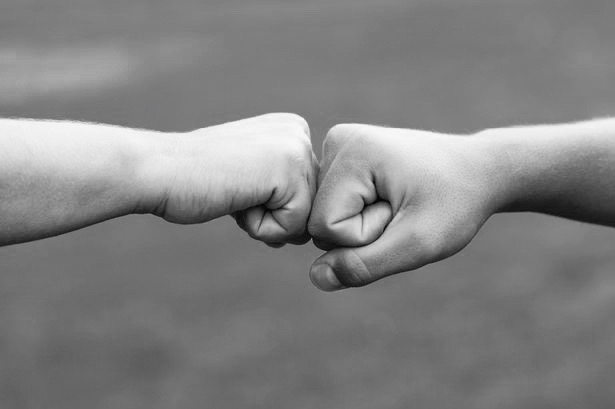
While it’s perfectly reasonable to have preferences and boundaries around our physical contact with strangers, many people have become scared to touch anyone outside of their inner circle of family, friends and intimate relationships.
Why the fuss? Because reports of loneliness and low mood across all age groups is rising at alarming rates in the UK, and research reveals that residents are increasingly touched-deprived as their network of support may not be within easy reach. Which may leave those less tactile at more risk of isolation and related depressive conditions.
While we need to appreciate that some people consider the simple act of any physical contact taboo, and a small percentage of folk suffer from Haphephobia; an extreme fear or phobia of being touched or touching others. I wonder if greeting (appropriate) new people with a hug and kiss or 3, be beneficial to our total wellbeing?
So here’s the science bit
- Hugging releases oxytocin also known as the love hormone or cuddle chemical from the pituitary gland.
- Oxytocin is also the hormone of attachment; it helps us bond with our newborns, friends and lovers. Just twenty seconds of affectionate touching such as hugging, back rubs, gentle stroking is enough to trigger its release.
- Physical touch can literally rewire the brain and has even been beneficial in boosting the survival rates of patients with complex diseases including cancer.
- A hug can decrease anxiety and aggression in teenagers, help manage pain, relieve stress and can calm agitated Alzheimer’s patients.
- Hugging isn’t a sexual act; it’s a physical expression of care or friendship.
- A gentle tap on the shoulder is the least invasive or bothersome touch between strangers.

Hands-on practitioners such as Osteopaths use “therapeutic touch” as the mainstay of their treatment. Also, movement and rehabilitation methods, including one-on-one Pilates, use a variety of direct touch, which can have significant therapeutic benefits. The physical and emotional effects of human touch are profound. Clinical studies done over the years have found that it calms the nervous system and mind, decreases the heart rate, can lower blood pressure, reduce anxiety and stress. It improves immune function and can reduce pain levels too. Interestingly, some talking therapists and other clinicians are now offering “touch therapy“ specifically hugging as part of their patient management. There are also growing numbers of people seeking their own “professional touchers” to get the benefits too.
I’m tactile in my personal life but refrain from hugging my patients as it’s deemed non-treatment contact. I appreciate the importance of the boundaries and guidelines in place to keep patients (and health professionals) safe. However, I’ve always made an exception with small children sometimes best practice healthcare includes a hugging a child, especially if they reach out first. It’s often a sign they need reassurance, even with their parent or guardian present, or their way to say thank you, which is just lovely. A hug can make a big difference to their overall wellbeing, and while it’s important not to send confusing messages, having spent time building rapport and trust, the essentials in any practitioner-patient relationship. I would have touched them many times as part of my examination and treatment, so I think it’s entirely appropriate and just polite to respond with arms reached out too.
It’s no surprise that The National Institute for Health and Care Excellence (NICE) have caught up and are now encouraging NHS workers to give hugs to sick and dying children, but why just children? If science proves that the instinctive act touch, holding, hugs and massage have been used as a method of comfort and affection for as long as humans have been, well, human. Wouldn’t all people benefit from a brilliant non-invasive physical intervention for pain and agitation, especially when they are poorly or during end-of-life care, when feelings of safety, security are so crucial?

How much do you use the silent language of compassion, communication and connection?
Research has found apparent cultural differences regarding touch. In one study psychologists watched friends chatting for an hour in cafes around the world, they noted that people in Florida exchange touch twice, in Paris that number increased to a more healthy 110 times. In Puerto Rico, the average was an astonishing 180 times! It may not be a surprise to learn that in London, the number was zero! Why are many UK residents so hands-off? That’s a rhetorical question; I am more concerned about how we can all get more of the benefits of touch.
Want to get more a little more hands on?
A simple hand on the arm from someone we care about platonically will make a difference to their wellbeing and ours. Alternatively, the scalp massage we received while at the hairdresser’s, or barbers, the foot rub offered as part of the pedicure will top-up our brains oxytocin stores. Here are some other options to share the love;
- Hug your friends and family but hang in for a few seconds longer to get those neurotransmitters flowing.
- Remember to reach out physically with a kind hand to someone who reports feeling sad; do ask first just in case.
- Hold hands with your child, grandchild or any child in your life even if they are old enough to cross the road by themselves. You’ll both reap the benefits, and parents have a responsibility to embarrass their kids on a daily basis, I am (kind of) joking!

Did you know?
You don’t need a partner for this, interestingly, the brain can’t distinguish between your hand and someone else’s which means if you live on your own, or spend extended periods away from your partner, family or friends. Or for whatever reason don’t like being touched by others, self-touch can offer the same benefits, and help you be more comfortable about being tactile with others if that’s your goal. Here are two simple ways to incorporate more touch into your daily life;
- Explore the landscape of your scalp with a “shampoo massage” while washing your hair.
- Taking more time to massage-in face cream or sun protection is an easy thing to do even for the most time poor.

Final thoughts
Is it time for you to get a little more tactile? Whether shared with others or by yourself, it’s a simple, easy way of letting go of daily stress. A friendly hug or a pat on the back can help us, and the people we touch feel more connected and happier.
It goes without saying that with strangers or acquaintances this can be more of a challenge, but there are plenty of social rules to navigate safely through this maze. For those still nervous, handshaking is still common practice in the UK, done mindfully it can allow for eye contact and a more significant connection.

